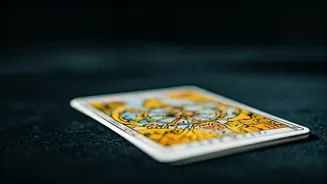History of Tarot
The origins of Tarot cards can be traced back to 15th-century Europe. Initially, Tarot decks were not used for divination but as playing cards, similar
to modern-day card games. These early decks were elaborate and expensive, often commissioned by wealthy families. Over time, the use of Tarot evolved, and the cards began to incorporate symbolic imagery and allegorical figures. The imagery became more complex, moving from simple game cards to a medium of spiritual and psychological exploration. The decks were used in Italy and later spread to France, where they were adopted into occult practices in the 18th century, transforming them into a tool for divination and self-reflection. The evolution of Tarot reflects shifts in cultural and philosophical thought, transitioning from recreational tools to instruments of intuitive guidance and personal understanding.
Understanding the Deck
A standard Tarot deck consists of 78 cards, divided into two main sections: the Major Arcana and the Minor Arcana. The Major Arcana contains 22 cards, each representing significant life themes and archetypes, such as The Fool, The Magician, The Empress, and The Tower. These cards often depict major life lessons or pivotal moments. The Minor Arcana comprises 56 cards, split into four suits: Wands, Cups, Swords, and Pentacles. Each suit represents a different aspect of life (e.g., Wands for action and energy, Cups for emotions, Swords for intellect, and Pentacles for material matters). Each suit holds ten numbered cards and four court cards (Page, Knight, Queen, and King). These cards provide more specific and day-to-day influences on the reading. Together, both sections provide a comprehensive and symbolic framework for exploring various facets of human experience, offering insights into one's inner world and external circumstances.
Interpreting the Cards
Interpreting Tarot cards involves understanding their individual meanings and how they interact within a spread. Each card has a variety of meanings, which can be interpreted based on context and the reader's intuition. The meaning of a card can change depending on its position within a spread and the surrounding cards. Card meanings are often categorized into upright (representing the card's general meaning) and reversed positions (often representing a blocked energy or challenge). Readers often use spreads – specific arrangements of cards – to answer questions or explore different aspects of a situation. Common spreads include the three-card spread (past, present, future) and the Celtic Cross (more comprehensive insight). Intuition plays an important role, as a reader connects with the card's symbols, imagery, and personal associations. Practice, study, and reflection on personal experiences will help increase accuracy in readings.
Using Tarot for Guidance
Tarot cards can be utilized as a tool for self-reflection and personal growth, offering guidance in various areas of life. They can provide insights into relationships, career choices, emotional well-being, and more. When using Tarot for guidance, it's crucial to approach the process with a clear intention and a specific question in mind. The cards do not predict the future but offer potential outcomes and highlight areas for attention or action. The reading should be seen as a mirror reflecting the querent's inner world, prompting self-awareness. Tarot readings can help in exploring different perspectives and making informed decisions. By engaging with the cards, individuals may gain a deeper understanding of themselves, their challenges, and their aspirations, leading to more mindful and empowered living. The practice requires openness to the symbols and an awareness of one's intuition.
Ethical Considerations
When working with Tarot, ethical considerations are essential to ensure the process remains supportive and responsible. It's crucial to respect the querent's autonomy and avoid making predictions that could disempower them. A reader should never offer definitive pronouncements about the future or use fear tactics. Instead, they should foster a safe and non-judgmental space for exploration. Confidentiality is paramount, and information should be handled with sensitivity and discretion. Responsible Tarot readers prioritize empowerment and self-discovery over fortune-telling. They assist clients in understanding their strengths, challenges, and potential paths. The goal is to provide guidance, not dictate outcomes, and to encourage the querent to make informed choices. By embracing these ethical guidelines, Tarot readings can be a positive and empowering experience for all involved, fostering a practice of empathy and respect.













